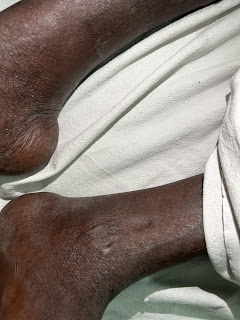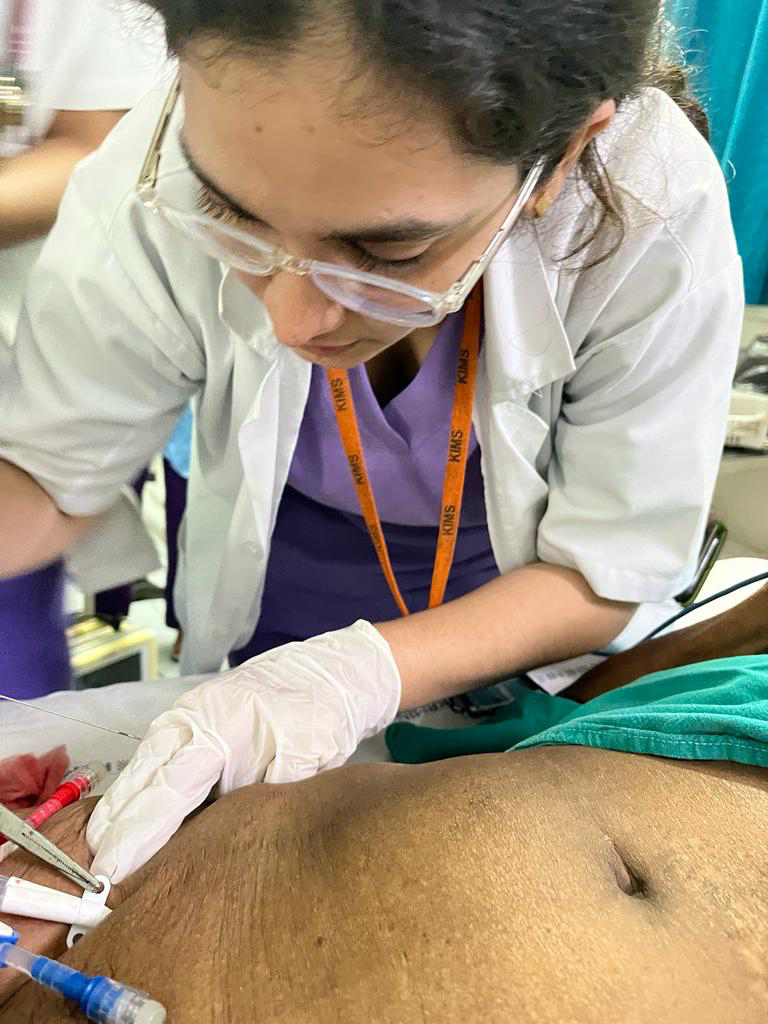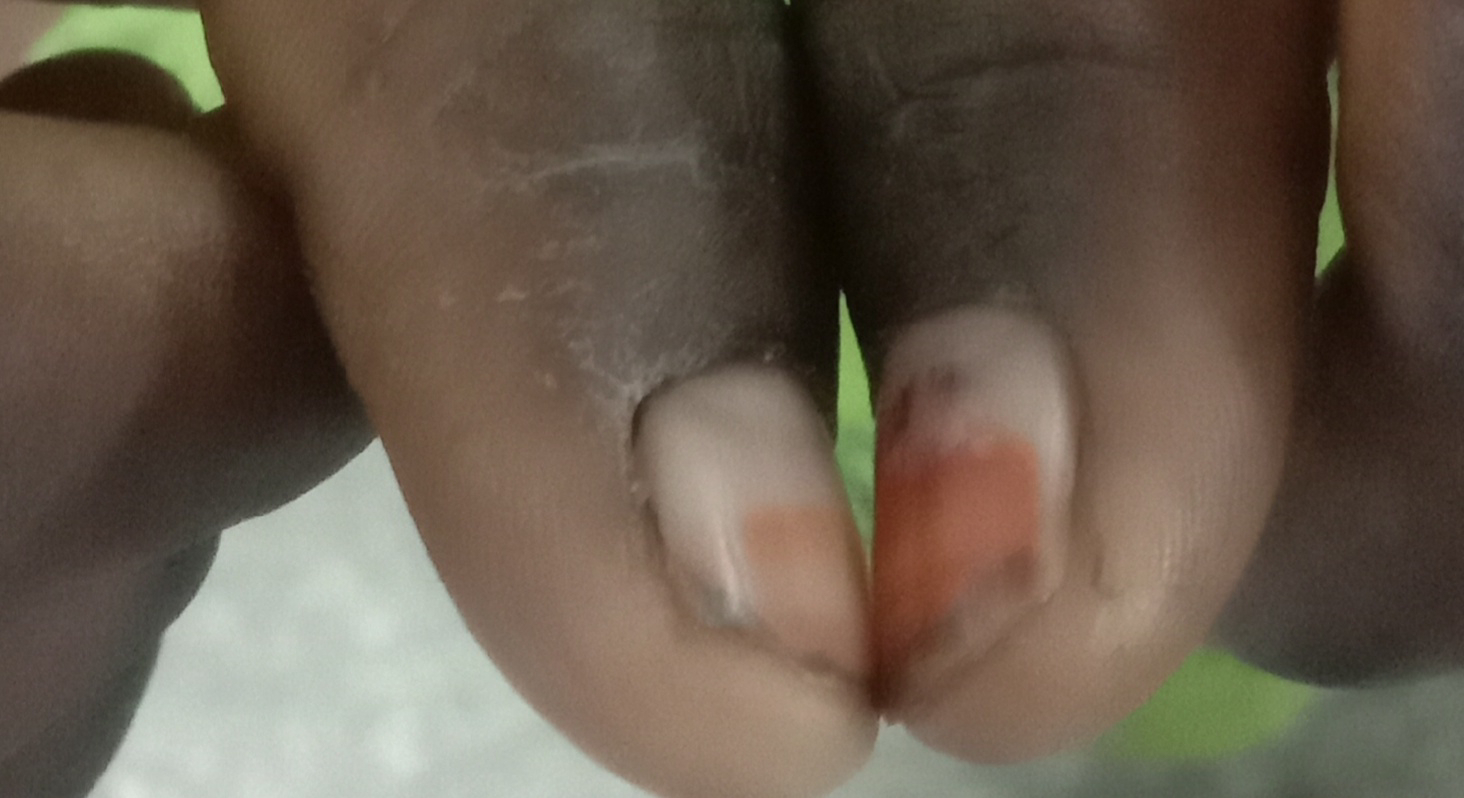1801006103 LONG CASE
This is an a online e log book to discuss our patient de-identified health data shared after taking his / her / guardians signed informed consent. Here we discuss our individual patients problems through series of inputs from available global online community of experts with an aim to solve those patients clinical problem with collective current best evident based input.
This E blog also reflects my patient centered online learning portfolio and your valuable inputs on the comment box is welcome.
I have been given this case to solve in an attempt to understand the topic of " patient clinical data analysis" to develop my competency in reading and comprehending clinical data including history, clinical findings, investigations and come up with diagnosis and treatment plan
The patient/ attender was informed the purpose of the information being acquired. An informed consent was taken from patient/ attender and there is omission of information that was requested to be omitted.
A 55 year old male who was a daily labourer , was brought to medicine opd with chief complaints;
•Shortness of breath since 7 days
•Decreased urinary output since 7 days
HISTORY OF PRESENT ILLNESS
Patient was apparently asymptomatic 7 days back then he developed shortness of breathwhich was incidious in onset and progressed from grade 2 to grade 4 agrevating on lying down position asociated with orthopnea and paroxysmal nocturnal dyspnea
History of decrease urine output since 7 days
No history of chest pain , sweating, syncope , palpitations.
No history of burning micturition, fever.
No history of cough, hemoptysis
PAST HISTORY :
History of pedal edema on and off since one year confined to ankles
Known case of hypertension
Not a known case of diabetes, asthma , epilepsy, Tuberculosis , CAD.
No Similar complaints in the past.
Treatment history
Drug history:
Tab TELMISARTAN 40mg OD since 1 year
NSAIDS : taken since 4 years occasionally but from past 2 years taken almost daily for his leg pains
Past surgical history
No past surgical history
FAMILY HISTORY :
No significant family history
PERSONAL HISTORY :
DAILY ROUTINE :
He wakes up around 5 am in the morning and does his household chores , goes to work for 5 to 6 hrs and returns back home around lunch time 1pm and take rest for the day. He will have his dinner around 7 30 pm and goes to sleep at 9 pm. He now has stopped his daily work since a year.
Appetite - Normal
Diet - Mixed
Sleep - adequate
Bowel habits - regular
Bladder habits - decreased
Addictions - history of smoking (beedi 4 per day since he was 20 years old ), history of alcohol consumption (since 30 yrs and occasionally whisky 90 ml each time since past one year ).
GENERAL EXAMINATION :
(Consent was taken)
Patient is conscious, coherent and cooperative.
Moderately built and moderately nourished.
Pallor - present
Icterus - absent
Cyanosis - absent
Clubbing- absent
Lymphadenopathy- absent
Edema - bilateral lower limb edema , pitting type , seen in ankle region.
VITALS :
Temperature - Afebrile (98.6F)
Pulse rate - 80 bpm
Blood pressure - 130/80 mm Hg
Respiratory rate - 17 cycles per minute
SpO2 - 95%
SYSTEMIC EXAMINATION :
CARDIOVASCULAR SYSYTEM:
INSPECTION :
Shape of chest : normal
Mildrise in JVP
No Precordial bulge
No visible pulsations
Apexbeat : not well appreciated on inspection
PALPATION :
Apical impulse -
Shift to 6th intercoastal space lateral to midclavicular line
No Parasternal heave and thrills
PERCUSSION :
Left heart border - shifted laterally
Right heart border retrosternally
AUSCULTATION :
S1 , S2 heard
No murmors
RESPIRATORY SYSTEM:
INSPECTION :
Trachea - midline
Shape of chest - elliptical
Type of respiration : abdomino thoracic
Chest is bilaterally symmetrical and elliptical
Bilateral airway entry Present
No chest wall defects
Presence of a healing, crusted ulcer on the right hemithorax medial to nipple.
Movement of chest is symmetrical on both sides
No sinuses / scars
PALPATION :
All the inspectory findings are confirmed
Trachea - central
Chest expansion - symmetrical
Chest circumference - 34 cms
No Tenderness over the chest
Tactile voacl fremitus:
Right Left
Supraclavicular N N
Infraclavicular N N
Mammary N N
Inframammary N N
Axillary N N
Infra axillary N N
Supra scapular N N
Infra scapular N N
Inter scapular N N
Percussion :
Resonant note
AUSCULTATION :
Vocal resonance
Left Right
Supraclavicular N N
Infraclavicular N N
Mammary N N
Inframmamry N N
Axillary N N
Infraaxillary D D
Suprascapular N N
Infrascapular N. N
Interscapular N N
Breath sounds : crepitations are heard in infra axillary infra scapular areas
Per abdomen examination:
INSPECTION
shape of abdomen is normal
No scars and sinuses
Umbilicus is central
PALPATION -
No Tenderness on superficial palpation.
Temperature - Afebrile
Liver is Non Tender and not palpable
Spleen is Not palpable
PERCUSSION - tympanic note heard
ASCULTATION- Bowel Sounds Heard
CENTRAL NERVOUS SYSTEM :
Patient is conscious coherent and cooperative
Speech is normal
No signs of meningeal irritation
Cranial nerves - intact
Sensory system normal
Motor system:
Tone - normal
Bulk - normal
Power - bilaterally 5/5
Deep tendon reflexes
Biceps : ++
Triceps : ++
Supinator: ++
Knee : ++
Ankle : ++
Superficial reflexes - normal
Gait - normal
PROVISIONAL DIAGNOSIS :
Heart failure associated with hypertension.
INVESTIGATIONS:
Hemogram
Hemoglobin - 7.7 gm/dl
Total count - 14,100 cells/cumm
Lymphocytes - 16%
PCV - 23.1 vol%
SMEAR :
RBC - Normocytic normochromic
WBC - increased count (neutrophilic leucocytosis)
Platelets - adequate
Kidney function test
Serum creatinine - 4.0 mg/dl
Blood urea - 95mg/dl
ABG :
PH 7.43
Pco2 - 31.6 mmHg
Po2 - 64.0 mmHg
HCO3 - 21.1 mmol/l
Urine examination :
albumin ++
sugar nil
pus cells 2-3
epithelial cells 2-3
Red blood cells 4-5
Random blood sugar - 124 mg/dl
CHEST X RAY :
Electrocardiogram :
2D echo
TREATMENT :
Inj. Thiamine 100mg in 50 ml NS TID
Inj. LASIX 40mg IV BD
Inj. Erythropoietin 4000IU SC Once weekly
Inj. PAN 40 mg IV OD
Tab. Nicardia Retard 10mg RT BD
Tab. Metoprolol 12.5mg RT OD
Hemodialysis
Intermittent CPAP
Allow sips of oral fluid
Monitor vitals.















Comments
Post a Comment